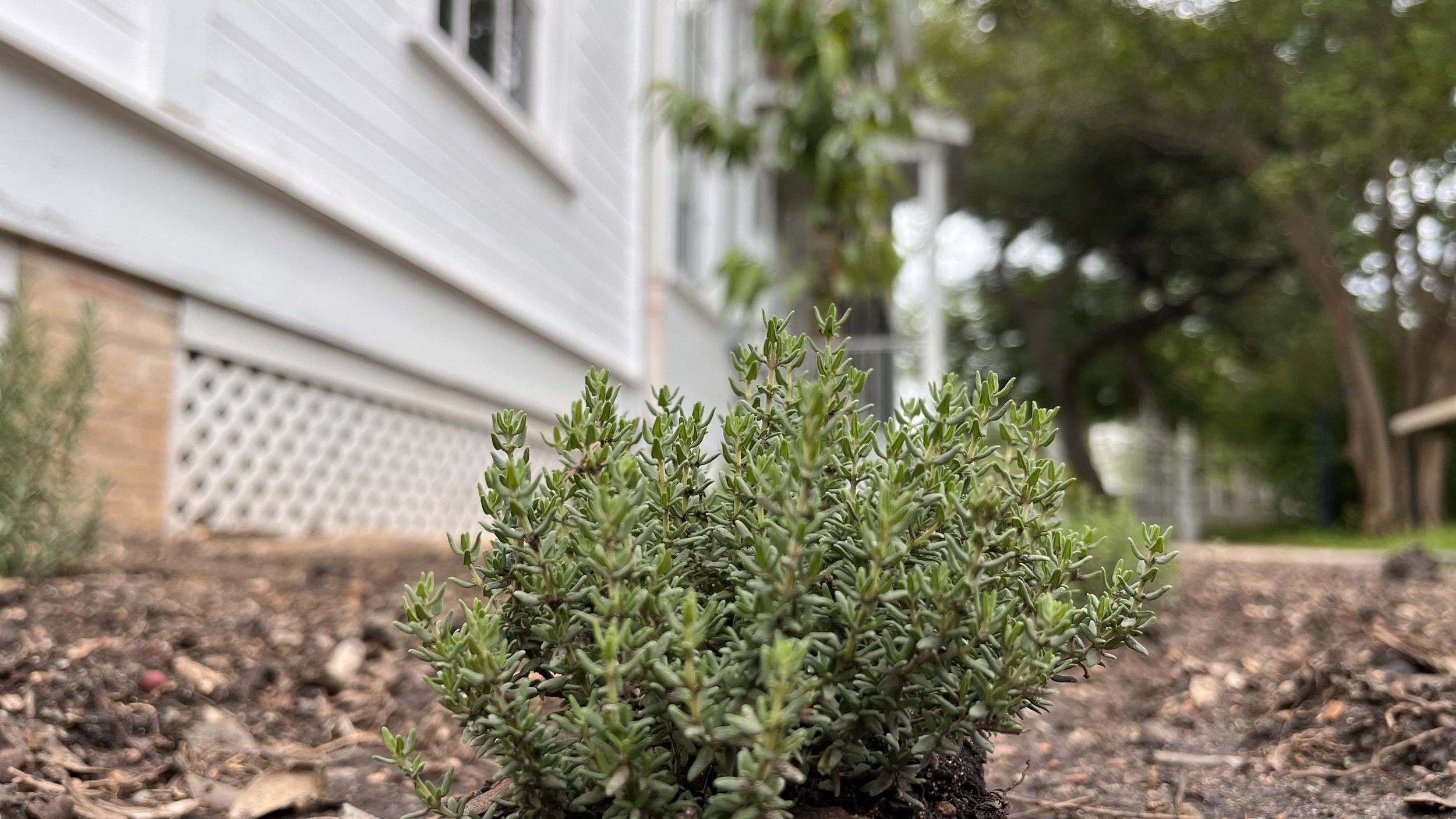
Welcome to the newest interpretive space at the Neill-Cochran House Museum - our garden! It is truly in its infancy - the plants are just beginning to settle in to their new home - but we are excited to share with you time capsules that date back to c. 1855 and c. 1930. One of the great things about gardens is that they can connect us across time. Plants change, and the climate changes, but there are a many similarities between today and 1854, when Lucadia Pease (wife of then-Governor Marshall Pease) wrote in frustration to her sister in Connecticut:
I think I have the sole right to offer the warm weather as an excuse for not writing, your three or four of even a week of warm days, is only a specimen of what we have continually, with no variation except that I exclaim each day, 'this is certainly hotter than any day we have had this summer,' when in fact there is no great difference in the days, only I have less patience to endure them.
On the other hand, when the weather cooperated, Mrs. Pease noted that there was an “abundance of the common garden vegetables – and have the promise of a fine supply of melons, which have to supply the place of many fruits.” If you live in Austin today, you might be nodding your head at how familiar this quote from the 1850s feels.
We still can grow tomatoes, cucumbers, squash, peas, beans, okra, onions, potatoes, sweet potatoes, and lettuce and winter greens. And, fruit remains elusive - peach trees flourish in the hill country (if we can avoid late frosts and, just as importantly, hail storms) as well as some grapes and passion fruit, but other fruits are challenging. You will find examples of all of these vegetables and fruits in our garden, depending on the season.
A few selections from our garden appear here. We encourage you to visit often, as the garden is a living, breathing element of our site and will change with the seasons, providing ever-changing glimpses into life long ago.
Selections from the Garden
Purple Hull Pea (Vigna unguiculate)
This little guy is a sprouting Purple Hull Pea (Vigna unguiculate). Peas have been an important part of Texans’ lives since the antebellum era. The peas originally came to the United States with the transatlantic slave trade, and were grown and eaten by enslaved people across the Southern United States. They are sometimes known as “cowpeas” because they became popular livestock feed during this period, particularly as they replenished nutrients in over-farmed soil.
They are similar to black-eyed peas in flavor and use, though somewhat more delicate in texture. They do not require staking, and will grow to approximately 30 inches at maturity.
Southern Jewel Muscadine Grape (Vitis rotundifolia ‘Michx”
Did you know that, back in the 19th century, Texas saved the French wine industry? It’s true! In the 1880s, Europe experienced a blight that destroyed two thirds of the continent’s vineyards, including those in France and Italy. Desperate to save an industry on which so many depended, they turned to the United States, where native varietals in Texas had evolved to resist the phylloxera louse. Indeed, the Central Texas specimens which grew up in the limestone-rich soil were the most similar to French vines and even today France grows wine grapes grafted to the root systems of Texas native plants.
The NCHM has planted a Southern Jewel Muscadien Grape (Vitis rotundifolia ‘Michx’) that continues the Texas native tradition of being resistant to disease and pests. The mature plant will bear large, black fruit in bunches of 6-12 berries in summer.
Peach, Sam Houston (Prunus persica ‘Sam Houston’)
The Peach is the fruit most associated with Central Texas, and particularly with the Hill Country to the west of Austin. This peach tree pays homage to the peach orchard that once covered the northern section of the property, where the Texas Federation of Women’s Clubs is today.
It is fitting that our site features a peach tree, not just for its historic association with the orchard, but in testament to our location at the edge of the Edwards Plateau. Further to our east (and just a few miles from where we are today), the Backland Prairie begins, and area of rich soil that supports commercial agriculture. However, this peach tree speaks to our location at the edge of the rocky Hill Country, which resisted large-scale agriculture but supported fruiting trees, scavenging goats, and kitchen gardens.
Plumbago (Plumbago auriculata)
Plumbago is one of the true heroes of the Central Texas garden! Though not native to Texas, the plant has thrived here for well over a century. Indeed, the Cochrans planted plumbago in between the columns at the front of the house at the turn of the century.
Plumbago loves the summer heat, and blooms from late spring all the way into fall. Its delicate periwinkle blue blossoms can make you feel like a breeze is imminent, even if it isn’t.
Other Garden Selections
Thanks to Litty Dasch and BSA Troop 72!
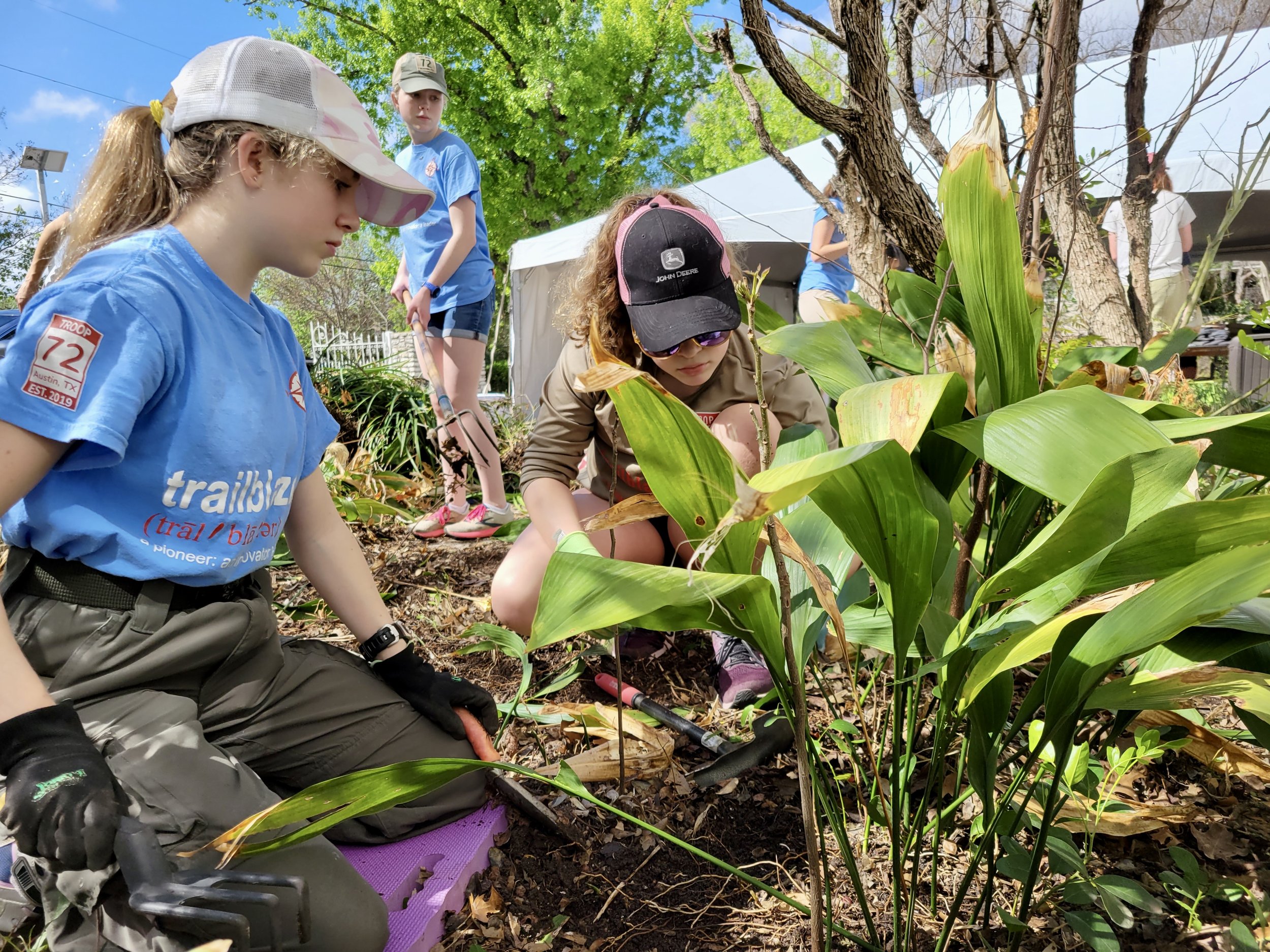
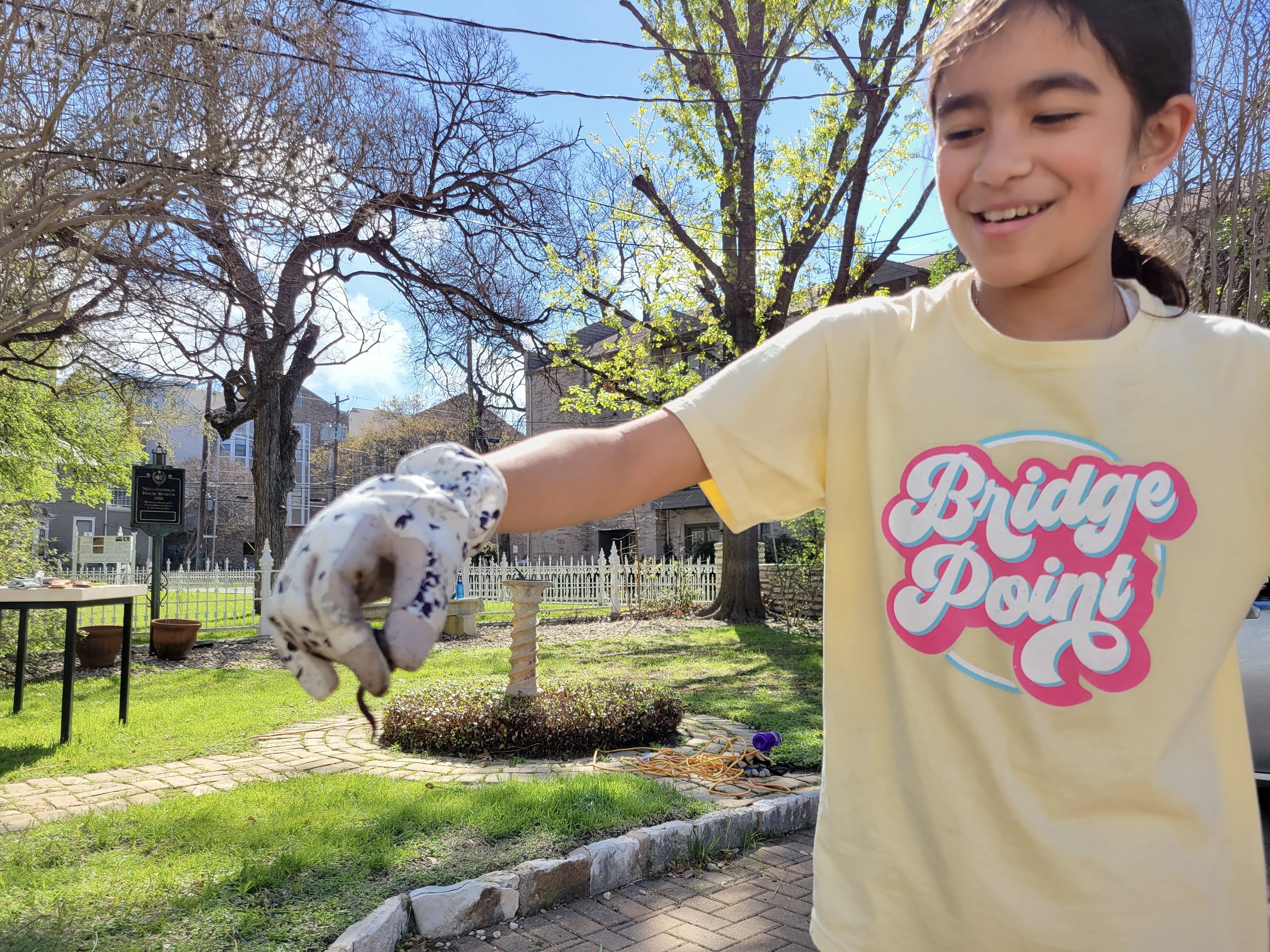
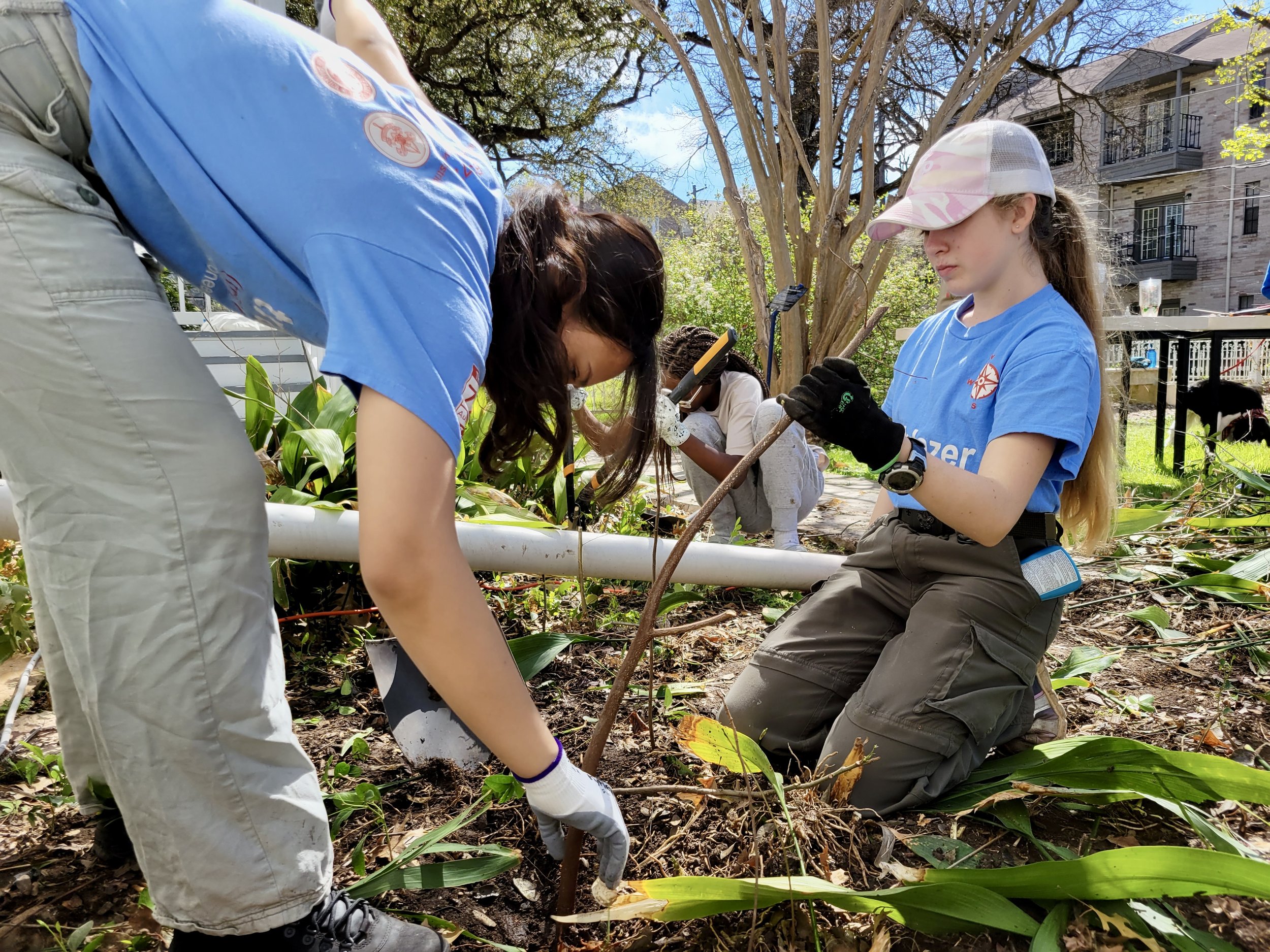
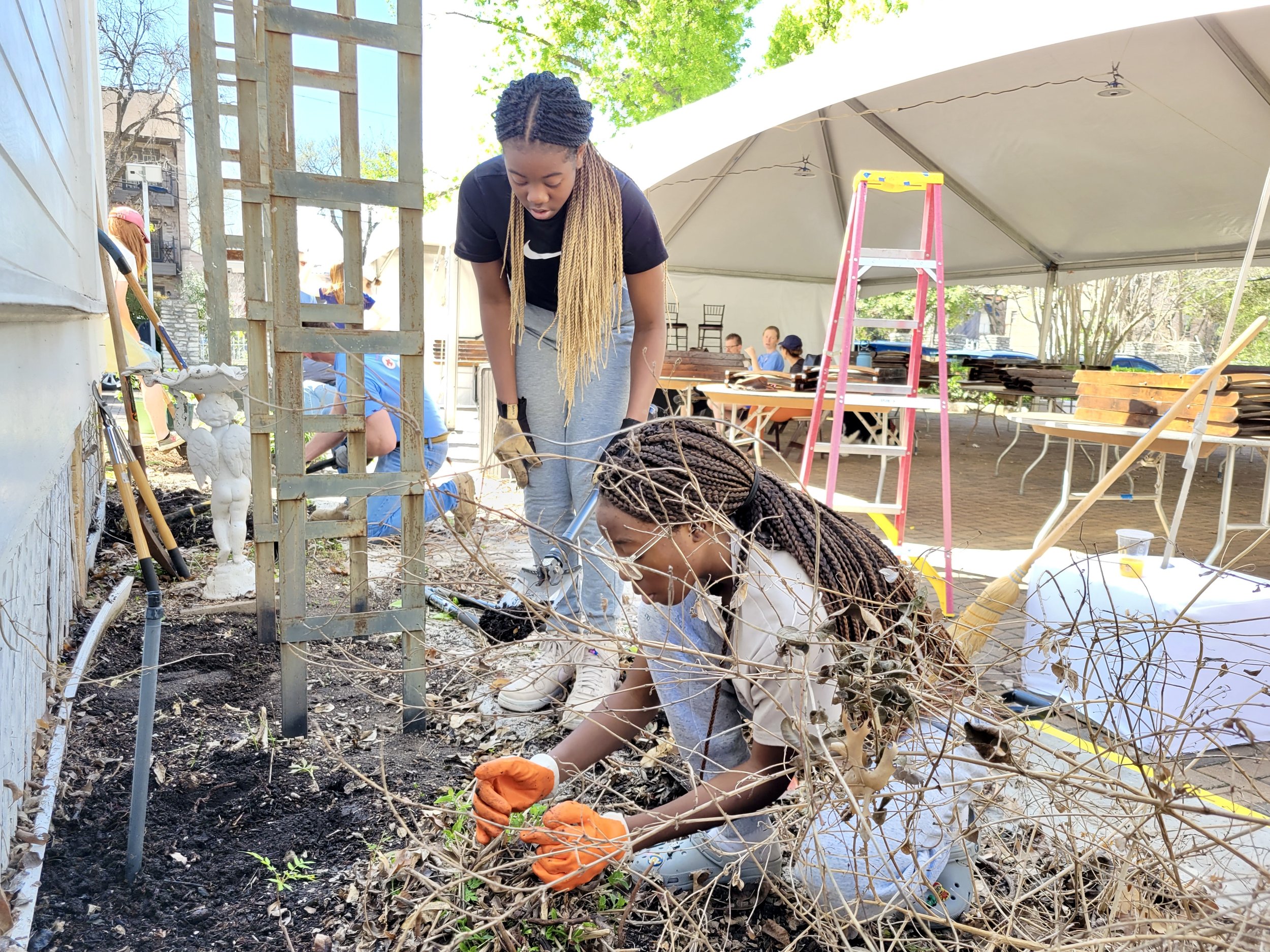
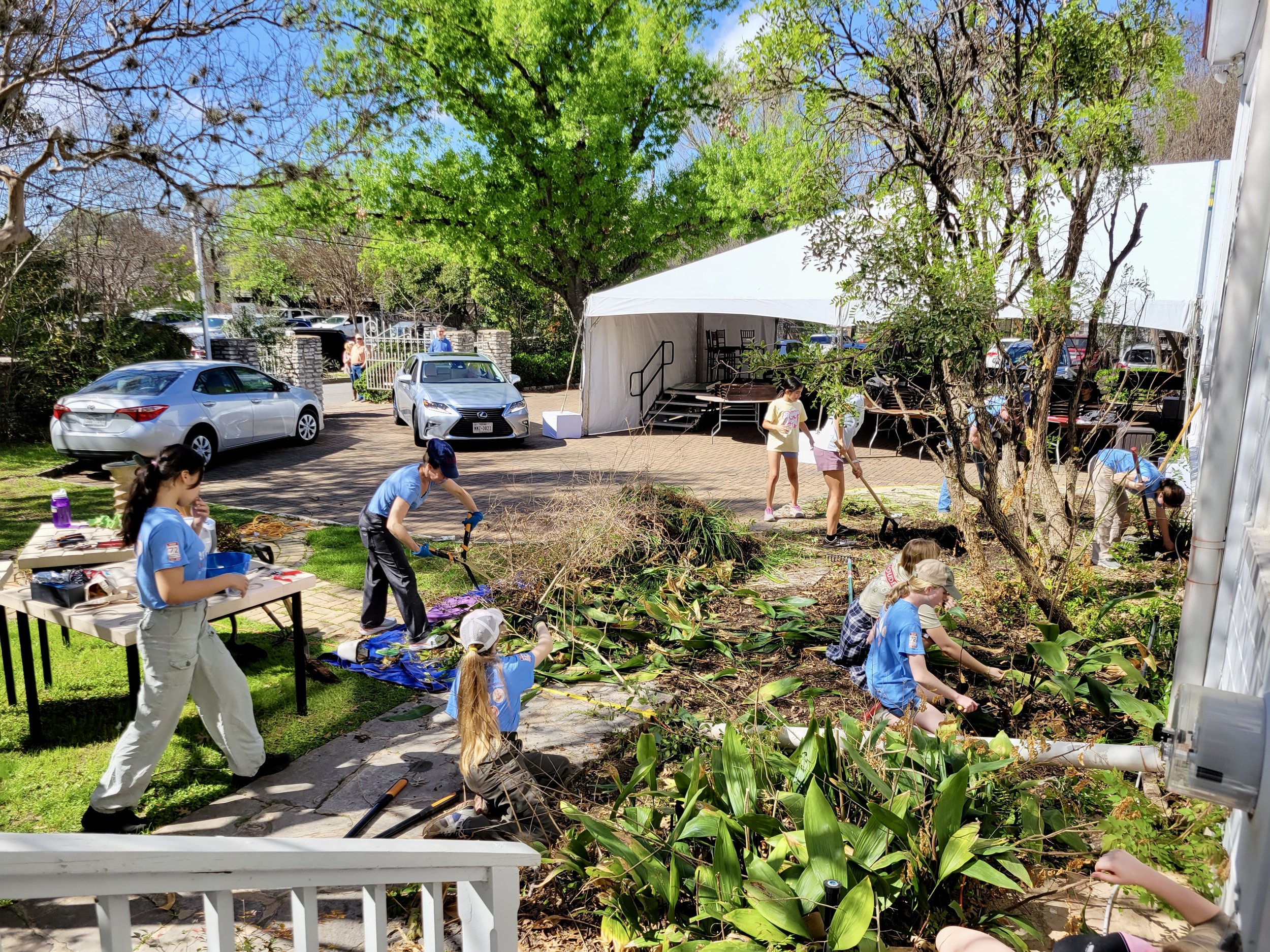
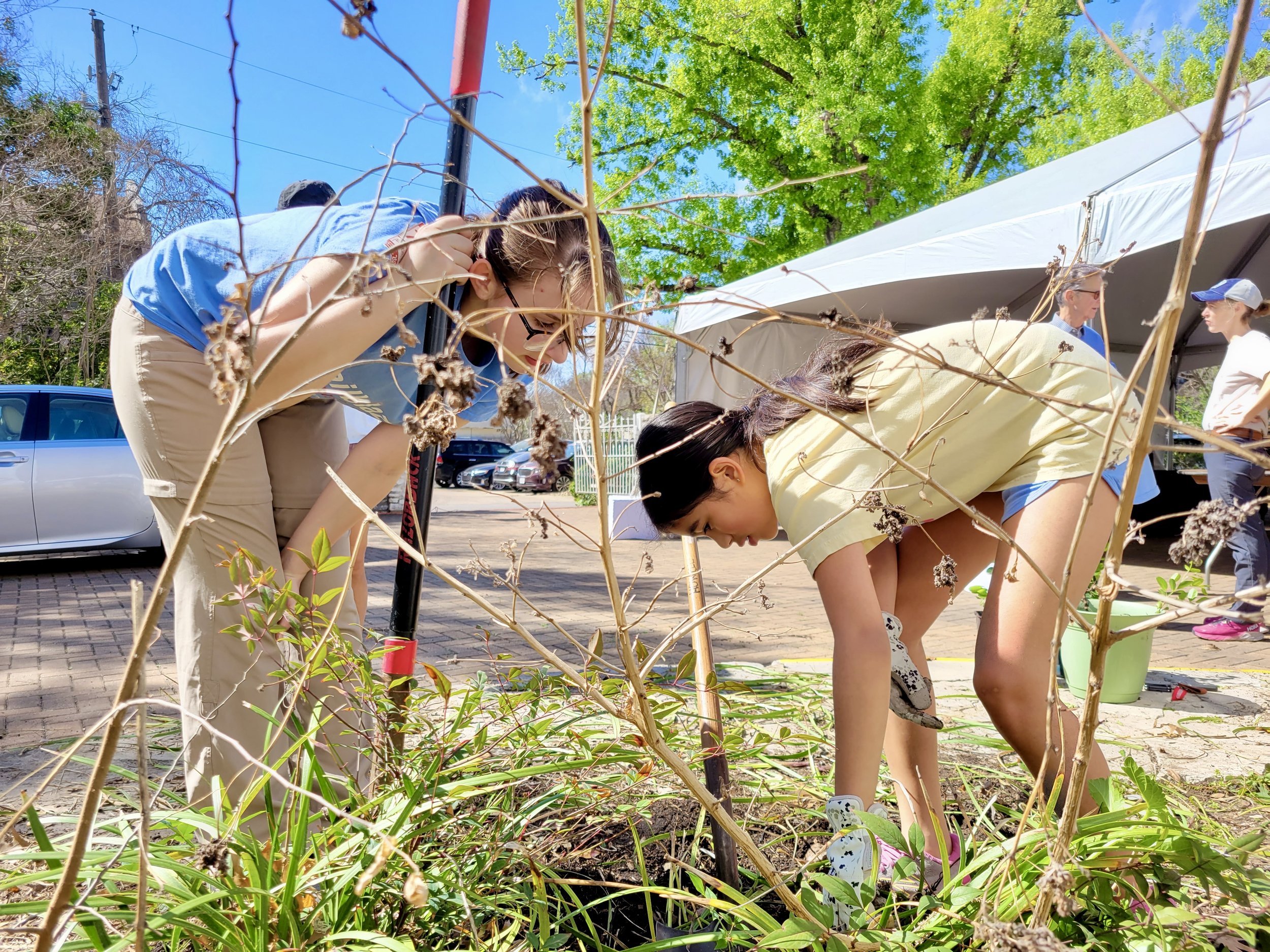
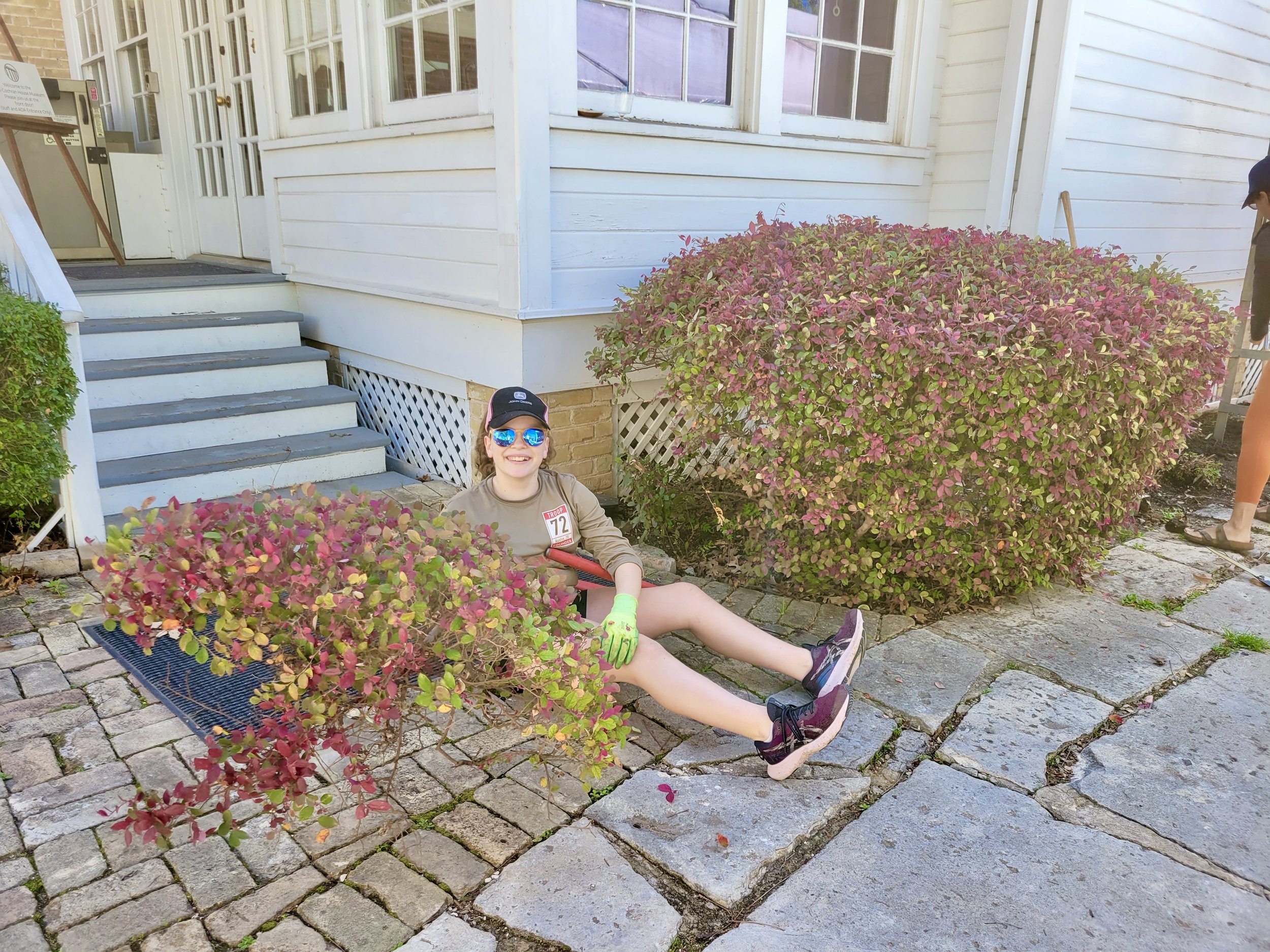
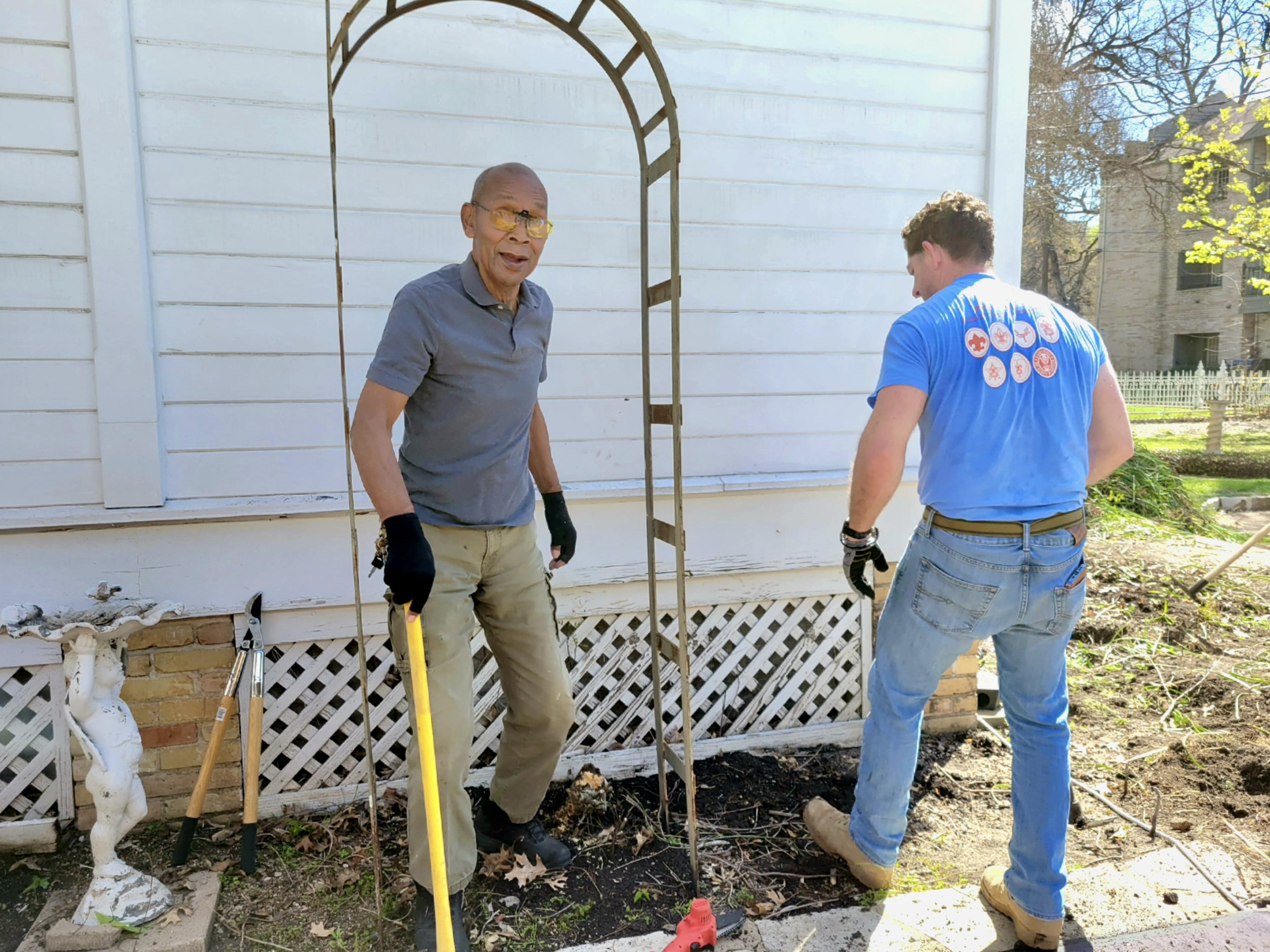
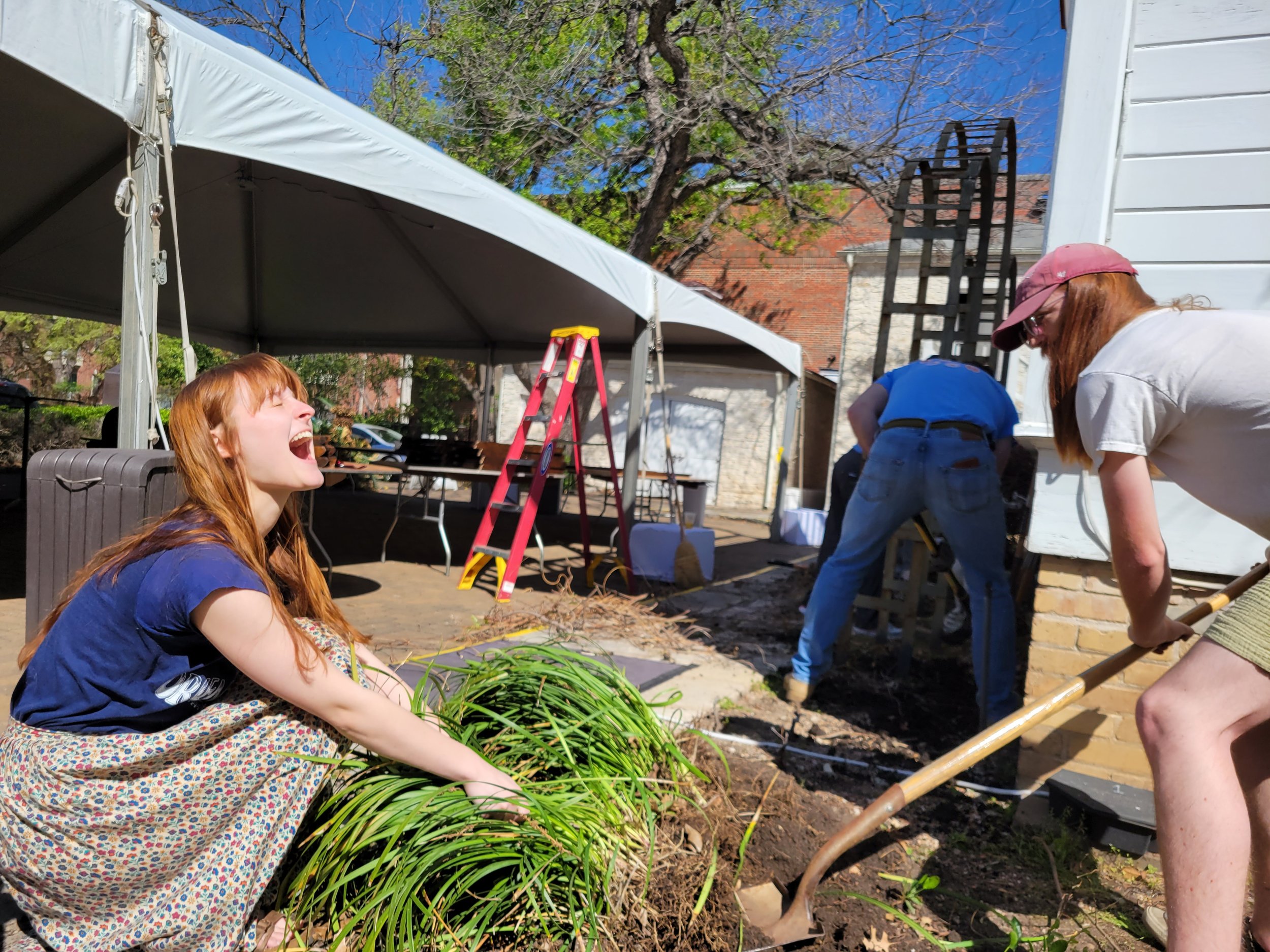
We are so appreciative to BSA Troop 72 for putting in the time (and muscle) to create our new interpretive garden!
The Scouts put in a total of 50+ hours to clear out old vegetation (with REALLY stubborn root systems) to prepare the beds and then install new, historically-appropriate plants.
BSA Scout Troop 72 and friends cleared the beds around the NCHM on March 5, 2023 and returned on April 8, 2023 to clear root systems and install new plantings.

